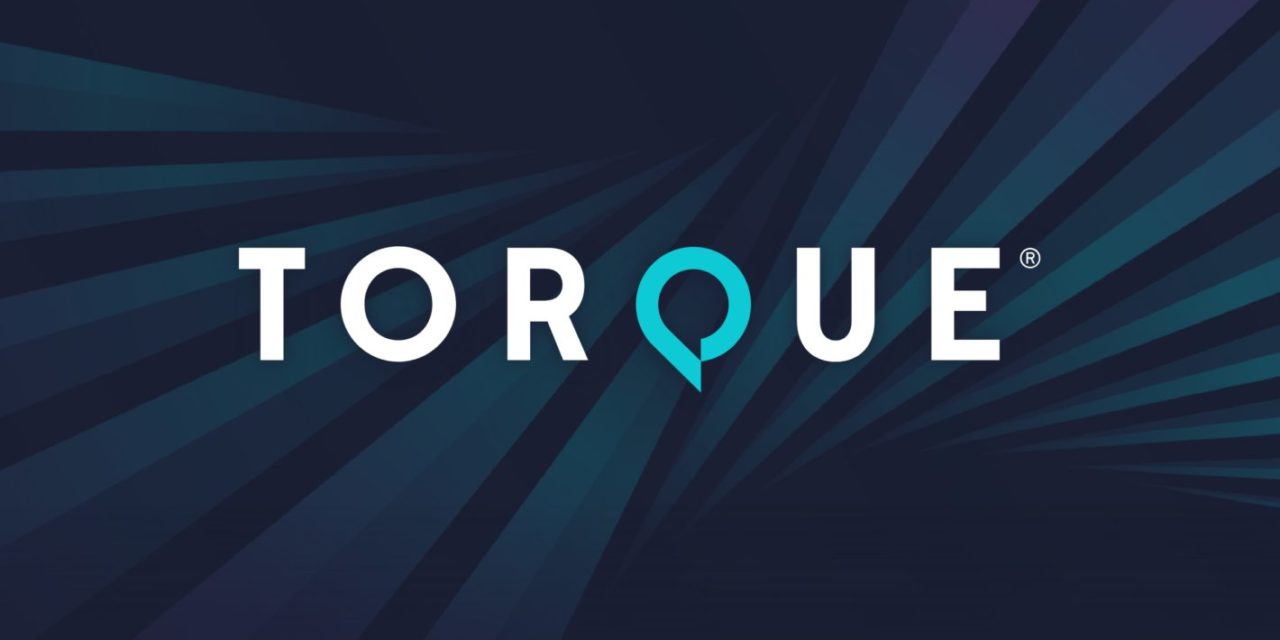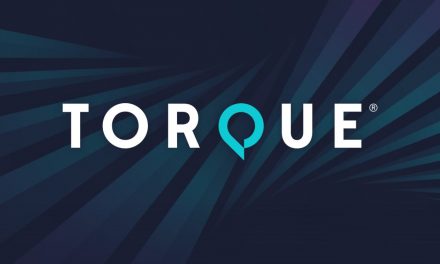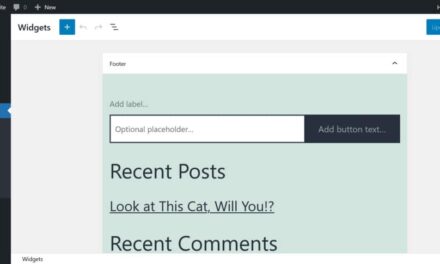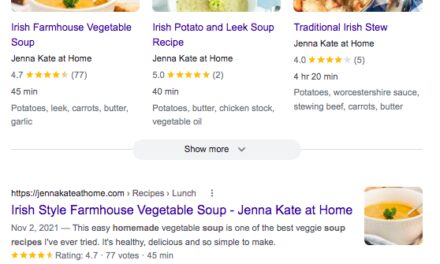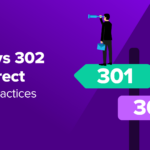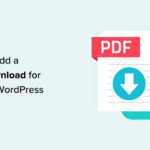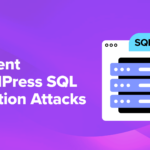Welcome to Press This, the WordPress community podcast from WMR. Here host David Vogelpohl sits down with guests from around the community to talk about the biggest issues facing WordPress developers. The following is a transcription of the original recording.
David Vogelpohl: Hello everyone and welcome to Press This the WordPress community podcasts on WMR. This is your host, David Vogelpohl, I support the WordPress community through my role at WP Engine, and I love to bring the best of the community to you hear every week on press this as a reminder, you can find me on Twitter @wpdavidv, or you can subscribe to press this on iTunes, iHeartRadio, Spotify, or download the latest episodes at wmr.fm. In this episode we’re going to be talking about content strategies that drive marketing and sales team results, and joining me for this conversation is Mr. Danny Layzell of AZoNetwork Danny, welcome to Press This.
Danny Layzell: Hey David, thank you for having me. Great to be here.
DV: Awesome, glad you’re here. And for everyone listening what Danny is going to talk to us about is his thoughts on getting customer insights from sales reps to help drive content strategy how to leverage data in your content strategy, activating your sales team to help them use and share your content and how all of that connects to the user experiences within the WordPress sites they build. I think this is great, I feel like a lot of folks building sites and content campaigns to support sales teams, kind of just like, almost like SEO fishing I’m gonna make some content, and hopefully get some leads. So I think it’s really good to dive into this today. Danny to kick us off I’m gonna ask you the same question I asked every guest. Briefly tell me your WordPress origin story.
DL: Sure. Well, it started when I took over the marketing for a private education organization, a while back now. And they needed to update and develop their overall digital marketing strategy, and one of the things was a real focus was there was the website, needed to be modernized it was very out of date, hadn’t really been looked at much, since it first been built. Now this had been built on WordPress and I project manage the overhaul of this site, and during that process I really got into really got into what the website Freelancer was doing and really got interested in the process so I did what a lot of water people in the community too. I headed straight to YouTube, and to the blog since the forums, started to learn as much as I could about WordPress and the plugins, and then took that knowledge and started designing a few sites for myself. And then eventually build up clients websites for them in a variety of different industries. At this point I was digital marketing I was a digital marketing freelancer. And one of the clients that I had at the time was a social network. There came an opportunity to join them full time, which was really keen to do once I joined them. The teams using WordPress to design the websites for the clients so the WordPress journey. Very much continues.
DV: Awesome, that’s a pretty cool origin story kind of trial by fire getting getting looped in there to project manage this overhaul is kind of interesting to hear you kind of learn more about it. Along the way, start building sites for others or yourself and then others, eventually leading you to roll with Aysa network. Can you tell me a little bit about what isn’t a network does.
DL: Absolutely. And just before I do that I just could say that the first website I built for myself was absolutely terrible. So it really was an interesting journey and the learning and the sort of the content available on the, on the internet was amazing for, for helping me along that journey. So network is. So we have a number of industry specific websites within the science, engineering and healthcare space. So, we have websites such as eco materials, so life sciences, digital robotics, and so on, and we create content and client profiles for these sites. Now the last count we were looking at last year about 100 million visitors, unique visitors per year so it’s a really big audience, and as part of that, as well as having that audience. We also offer a full range of digital marketing services, including web design, webinars, video creation, email marketing, etc, all within the science engineering and healthcare spaces.
DV: So you have this content network in a sense, but you also offer design and web development services, who do you offer that to.
DL: So, to the, to the people who are to the clients who showcase their product profiles on another website so the websites within the company are very much content focused. So they’re informative they’re educational pieces, and then that attracts a large audience, which then attracts the companies who sell products in these particular spaces who want to advertise or have their product profiles on these websites,
DV: very interesting so kind of this content focused for the core of the business but then supporting the businesses you work with, by also providing them with their web development and design needs. And that’s a very interesting backstory to think about it this way relative to our kind of context today, which is around content strategies and specifically those you know designed to help support a sales team to kind of want to transition now into that and, and by the way, Danny my first WordPress site was also awful so we’re not alone in that. But to kind of get to the topic at hand. Like what do brands get wrong. Typically, when crafting content strategies to support sales team, it’s like obviously a good point of view from from Asia network, but like in the typical case you see like what do you think people are doing wrong, like, why should it be done different shows.
DL: So, I think something that we see a lot of in the space I’m working at the moment is the mindset that we’ve always done it one way, so we’ll stick to that. And, and when it stops working. We’ll blame other reasons rather than looking internally at our strategy, and not being flexible to change that. Now, over the last year, that’s become less easy to do because the lockdown the national lockdown is all over the world and forced companies who haven’t pivoted previously to make that change, to adapt their digital strategy. The ones who were already in this place have been more successful than the ones who have been catching up. So we’ve seen a lot of that in this space so their mindset of not being able to pivot quickly, is definitely one that can that can damage your organization in a very quickly developing digital world. So, when I think that gets you wrong when it comes from the overall strategy side of things. When it comes to the creation aspects, and the thing is you either crafting content for yourself, or what you think the business wants, rather than what it is that the customers are looking for. So we touched on it briefly in the last hour we create product profiles for companies and some companies really want to push content that focuses on their products and everything, how amazing they are. And yes, you should buy it now. Whereas we try to steer them towards more educational content is going to help the people looking at it to learn about your product to become more confident with you as an organization to gain trust and build that trust between the two parties, and then build long term relationships that are going to become more profitable. And then the final thing that I think a lot of people do is, I think you mentioned in your introductory notes is that people write purely for SEO reasons, yes, it’s important that you appear higher up in the search rankings but if you write based only on what an algorithm is thinking and not for a human being, Then one song gets on your site, there’s gonna be little intent or little action taken from reading a piece that’s been purely written for the basis of appearing high up on search ranking. So those are the sort of the main, the main problems that we see and what brands tend to get wrong.
DV: Do you mentioned awake, not doing things the way you’ve always done them and how that can be problematic and you talked about it, like, maybe not reacting when something stops working. Do you find that another mistake folks make is not tracking that it’s working at all, like, not tracking new leads properly, not focusing their efforts based on outcomes is that, also, one of the things you think brands get wrong.
DL: So not in our experience, so we’re very big on making sure that companies know what’s working well for them because then we want to scale that up and, and put the budgets in the places where it’s working so it’s not something we see often, but it’s definitely an element that can that can can be nice, particularly with smaller companies who perhaps don’t have the resources to have the have the software in house, it’s good to help them with their attribution and things like that so, something we see often, but with smaller companies I can definitely see it being an issue.
DV: So by the time you get to it that’s not necessarily a problem but, you know, folks kind of sticking with ways they’ve always done things, even if they stopped working, not being able to pivot quickly creating content for yourself focusing on your products and services and not on educating your customers on the topics that surround that, and then kind of writing purely for SEO reasons. Sounds like and that’s a great batch of things I think people in my view certainly have gotten wrong. When thinking about their SEO strategy I think tracking the results also stands out for me personally, but it sounds like, how y’all engage with brands not not a big part of what you’re seeing. So next I really want to dive into, you know how content works in terms of driving a sales team, but we’re going to take a quick break and we’ll be right back.
DV: Hello everyone welcome back to press this the WordPress community podcast on W Mr. This is your host David Vogel Paul, we’re in the middle of our interview with Danny Lee Xcel talking about content strategies to drive marketing and sales team results. Before the break, Danny, you were sharing a little bit about the mistakes you think brands make when thinking about their content strategy overall. So my next question is like what are your thoughts on including sales teams directly in the content strategy process, are they just gonna like recommend the feature your own products and call sales right away like is it helpful to bring them into that process.
DL: Yeah, absolutely. I think it’s absolutely essential that you’ve got a really good relationship between your sales and marketing team and that you’re both singing off the same hymn sheet. Our primary job as marketers are just within Asia in general, is to make life as easy as possible for salespeople so that when they start to have conversations with the prospects. They’re already informed of allies, they already know the value that we can bring to the organization. Sales Team are pushing on Open Doors rather than banging their head against, against the closed door. So they, their insights is so important because they’re speaking with clients on a daily basis. They are the face of many organizations that are on the front line. They get the questions, or the problems that your prospects are experiencing or your current client base are experiencing, and all these insights, provide you with amazing fuel to, to develop your content marketing strategy. So, one example from a recent. A recent client meeting was they were reporting to ourselves case that their site. User average time on page was really really low, and they were generating loads of traffic, but then people weren’t staying on the site. So first of all great that they are generating the traffic so something’s going right in their, in their strategy but what can we do now to help them to improve their, their user experience overall. So we wrote a blog piece about user experience, how getting them there is just for the first part of the, of the journey and then once they’re there how the things you can do to develop your, your flow, your, your customer flow and your customer journey throughout your website so that they get what they’re looking for, and they can work and also get them to take an action that’s going to help your business.
DV: Yeah, I don’t think I could support that statement, any more Danny, I feel like, you know, this is one of the holes that I personally see with content teams. Also with product teams for that matter. Really not spending enough time with those frontline sellers. I liked how you talked about how your content strategy should be making life as easy as possible for that sales sellers. And, you know, I know a lot of folks will think of content strategy as a way to generate leads, but I loved how you talked about, you know, kind of like in this sense softening the ground or as you put it, you know, pushing on an open door, right, they’ve already learned about the topic you’ve already learned perhaps how your products have solved that need. And by the time your sales folks are speaking with someone that you’ve reached through your content. It really just completing that story. And if you don’t involve them in the story, then, then that won’t flow I’m guessing as well as if they were. I also liked how you kind of called out the problems that customers might be having the sellers are exposed to, you know, Thinking about it through the lens of like well what problems are they trying to solve for in their business. How is their experience with the product going now and what are the areas that potentially could be improved. And I think that’s was really insightful as well. So, I know my next question. Sounds like, yes, good to involve sales teams check. Got it. Next one is do you encourage sales people to actually use the content you create in their selling, or is it really only for getting people through the door and like, you know, having the pushing on an open door is more for that, are they also using it like a pitch collateral
DL: show so we like to be as efficient as possible so we’re using the sales team to help us with our content marketing, but then we also want them to be a big part of the distribution. So I think it’s sometimes a distribution channel that’s often forgotten about, and it can be really, really effective. So, we’re lucky our team at EVO are especially good at using content to build relationships through educating the prospects as we’ve mentioned previously, and the benefits of this is that it builds a long term relationship with that lead, which will hopefully lead to an increased lifetime value of that customer which is what the endgame is. So, a couple of examples that springs to mind of how, how they do this and how our sales team are involved in using content for selling, we have a webinar series that we’re running at the moment about digital marketers about digital marketing within the space that we operate. We have prospect well we had a prospect who came to one of our sales team, talking about potentially taking on a webinar package with us, they’re a little unsure about certain aspects whether it was right for them or not. So instead of pushing out the thing is really going back to and saying you have to buy now here’s, here’s a discount. Go go go. Often, going away from that hard sale. They say I shared a link and say look we’ve got this webinar coming up in a couple of weeks about how you can use webinars go ahead of that register for that attended, ask any questions you have and hopefully you’ll be able to come back to me afterwards, feeling much more comfortable, much more confident about this, this project. So they did and then it comes back to us as marketers to then make sure that this, this prospect is well taken care of, they have all their problems resolved for them, and then hopefully at the end of the month, when this webinar has been, they’ll go back to the sales team, feeling much more comfortable about the project and fingers crossed the sale will be secure. Another, another way we’re looking at distribution through the sales team is that we’ve calculated that between the sales and marketing team, we’ve got a rough network of around 15,000 on LinkedIn. That’s a team of about 1010 people so a large number of that audience is going to be really relevant to our overall business goals so we’re trying to create a internal comms process at the moment where the marketing team creates the content, be that video images, or polls or whatever, creates the copy writes the copy for them, having in one place of the sales team can easily get it. They can share it to their network, and hopefully help us with our brand awareness, we’ve got to remember, sales teams are really busy, their primary goal is to bring in the business bring in the money. So if we can make these processes as easy as possible for them to help us distribute the content, and they’re gonna be far more willing to do it, then if we say, oh yeah. Could you, could you share this occasionally has to be very specific, and, yeah, you really emphasize the importance and make it as easy as possible for them, and they’ll, you’ll get much better results.
DV: So you’re leveraging your sellers to help amplify your content to attract new prospects, that makes sense and I’m sure they’re really incentivized to do that. And then it also sounds like with the content strategy, you’re focusing on enabling specific parts of the sales process. Now sounded variants very serendipitous, and Inception like the webinar about webinars and talking about the webinar package. But the idea there is that you had content. This was serendipitous in terms of the timing but I’m guessing from your content repository sellers are kind of picking and choosing pieces of content that might help educate their prospects on a particular topic. Along the way, whether it be a conveniently timed webinar or guessing like a PDF from your content repository. That’s right.
DL: Yeah, absolutely. I mean, the webinar or webinars about the webinar package yes yeah, it’s a convenient example this happens, is happening at the moment, but we also have. We take all of our solutions that we offer. We have a spreadsheet with us with three best performing pieces of content. And in that so the sales team can jump in, they can take that and they can share it. If they’re in the middle of any sort of conversation, ongoing conversation so like I said make it as easy as possible for them. And there’ll be a really effective channel for distributing the content.
DV: Yeah, I feel like that’s really interesting to think of the role between content and sellers in that context, because I feel like sellers in general are great with objection handling and in generally educating but not really, truly, deeply educating and I feel like that’s a place where content creators can really stand out. And if you can combine that because again, handling an objection is one thing but handling, ignorance is a totally different thing. You know it does feel like the combination of those two together, would be really powerful. My next set of questions is, my next question particulars around data, but we’re going to take one more break and we’ll be right back.
DV: Welcome back to Press This WordPress community podcasts on WMR. We’re in the middle of our episode covering content strategies that drive marketing and sales results right before the break, Danny we’re sharing a little bit about how sales folks will amplify the content in your content campaigns as well as use them in their sales process. You mentioned to me that you like to use data in your content strategy imagine I hopefully most people do. But how do you do that, are you looking at like the sales team KPI like things like users and form fills and Google Analytics, like, what is your approach on the data side.
DL: So first of all, primarily we use the data that we’ve got to help create our ideal customer profiles, and are buying personas. Once we’ve got those in place, we will use data to formulate our communication plans. So one example, at the moment is, we are starting to promote our new analytics or our updated analytics software, and the data from across our network is showing us that only 3% of site visitors are identifiable sales qualified leads. So that little quote there is going to be our main talking point for this particular campaign. Our main talking point for when the sales team are talking to prospects, and it’s gonna be the heart of everything we do, content wise in the initial phase of this campaign. Another thing that we do is we, we look to learn from anyone who engages with our content and marketers should be learning all the time, I believe. So, if someone downloads an ebook or registers for a webinar, complete some sort of data capture or magnet form, then we’ll ask them what is there, just a simple question What is that biggest digital marketing challenge.
DV: So you’re kind of following your news then as it relates to the data in orchestrating your campaigns based on what the data is showing you. So in that example you kind of identified the profile of the person you were targeting the persona, then you targeted what you felt was a hole in the KPI, and then you orchestrated your campaign to address that hole or, you know, I guess in other cases improve something working well. And that’s how your philosophy works there. Now you talked about how you might be modifying the forms based on kind of enriching the profiles in that example and I think that’s a nice segue to my next question which is how do you approach all of this from the UI and UX perspective, relative to content campaigns in WordPress. And maybe, like, particularly around CTA is like what does this look like when you go, modify the WordPress experience for the site’s manage
DL: show so again this is really important, it goes back to what we’ve been saying about everything to do with the customer journey. We’re trying to provide site visitors with an enjoyable experience, and take them on a journey where they can get what they can get what they’re looking for, as easily as possible, and take the next steps, whatever that may be on whatever position they are in the buying process. So, if we take a top of funnel blog piece as an example. We don’t just want to provide large amount of information in a condensed format, format that is difficult to read. We want to make sure that the reader who’s going to skim read it or read it on their mobile, there’s nice formatting so we’ll include shorter paragraphs images infographics videos, anything snippets from podcasts, anything that can provide a better overall experience. And then another thing that you mentioned though is that we want to strategically position on calls to action, and what they look like once they’ve been clicked. It’s really great, a great experience for a prospect if they can click on a call, or book a demo or speak to our team call to action and it takes them to your calendar, so they can book a time within your calendar that fits within this shows that you appreciate their time, you take it that you really care about getting their business, a little things. I this. Some will say that yeah if you do that then these leads aren’t on they turn out not to be great leads and you’re just wasting people’s time, if that becomes the case then you can put in some sort of lead scoring but it’s an interesting, it’s an interesting way of giving the power to the customer, giving them the power to book a time that suits them very specific time that suits them. The final thing in terms of CTAs user experience is whether or not you get content. So something I know we’ve talked a lot about data and capturing data but it’s something to think about. And it’s the conversation that we’re having at the moment. How many opportunities to educate prospects are you losing because you ask for an email address before they can read your ebook or white paper. And on the other hand, are you willing to lose the data and the insights that the registration question, provides so if your WordPress site is set up to capture the information haps Have a think about using a different, different strategy, providing all your content for free without any sort of gate, and see how that impacts your overall your overall traffic and the leads you generate, after all.
DL: I like the idea of having your website optimized for each experience so that when they use it, the user can find and do what exactly they’re looking for as easily as possible regardless of what part of the customer journey they’re on.
DV: Oh, I love that focus and this particularly on the user journey I knew you really touched on some really important things there like the notion about paying attention to the reading styles of those that might be reading your content and providing optionality for them strategically thinking about your CTAs I love the debate, and what you covered there engaging or not engaging content. The basis of monetization on the web I always describe as the balance between suffering and joy. The joy of reading content the suffering of maybe filling out a form or giving your credit card, but really, really poignant thoughts to end on. Danny, thank you so much for joining us today.
DL: Thanks Dave. It’s been great to be here. Thanks for having me.
DV: So glad to have you here if you’d like to learn more about what Danny’s up to and maybe learn some cool science stuff, you can visit a AZoNetwork.com. Thanks everyone for listening to Press This the WordPress podcasts on WMR. Again, this is your host David Vogelpohl, I support the WordPress community through my role at WP Engine, and I love to bring the best of the community to you here every week.

